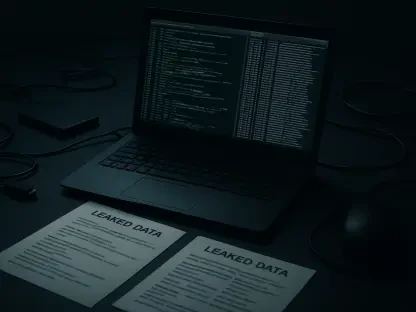The cybercriminal group known as Scattered Spider poses an increasingly potent threat as it diversifies its targets across various industries using refined phishing and ransomware tactics. This shifting landscape is underscored by the revelation of over 500 phishing domains assimilated into their arsenal, highlighting a broad strategy aimed at capitalizing on weaknesses in sectors like technology, retail, aviation, and financial services. As experts delve into the methods and motivations behind Scattered Spider’s actions, enterprises find themselves at a critical juncture in cybersecurity, faced with the urgent need to fortify defenses against these adaptive threats.
Methods of Attack
Advanced Social Engineering Strategies
A defining aspect of Scattered Spider’s operations hinges on its adeptness at social engineering. The group’s employment of targeted phishing and phone impersonation tactics has proven effective in compromising credentials, especially from third-party IT service providers. Spanning various industries, these tactics facilitate the initial access required for deeper infiltration. Through exploiting highly convincing typosquatted domains and deploying phishing frameworks designed to bypass multifactor authentication (MFA), Scattered Spider keeps its victims vulnerable and exposed. Multifactor authentication, once considered a robust security measure, falls prey to the group’s sophisticated compromise techniques. As they bypass traditional security protocols, the necessity for investing in advanced MFA solutions becomes apparent. Overhauling outdated security infrastructure and emphasizing proactive vigilance could substantially mitigate the exposure of sensitive information.
Use of Legitimate and Malicious Tools
Following initial compromise, Scattered Spider exhibits proficiency in sustaining prolonged access to victims’ systems through both legitimate and malicious remote access tools. Instruments like TeamViewer, often used for benign purposes, are cleverly manipulated alongside malicious tools such as Mimikatz. These intrusions facilitate continuous monitoring and extraction of valuable data. This hybrid approach of blending conventional tools with nefarious intentions underscores the difficulty in distinguishing legitimate from illicit activity on compromised systems. By leveraging tools already present within the organizational environment, the group effectively camouflages its operations, making detection challenging without enhanced endpoint detection mechanisms. The seamless integration of deception with familiar infrastructure accentuates the requirement for comprehensive auditing of remote access systems, focusing on unusual usage patterns.
Industry Targeting
High-Profile Ransomware Incidents
Notable targets, including retail giants Marks & Spencer and airline corporations like Qantas, underscore the magnitude of Scattered Spider’s impact, casting a wide net that disrupts both financial and operational functions. The FBI has confirmed that airlines remain significant targets, with threats extending to companies like WestJet Airlines and Hawaiian Airlines. This level of exposure reflects the group’s adaptive strategies and opportunistic mindset, preferring high-value vulnerabilities instead of maintaining a fixed industry focus. Such flexibility in targeting industries tests the resilience of cybersecurity defenses, pitting traditional models of predictable attack patterns against an evolving threat landscape. With business continuity at risk, organizations often find themselves unprepared for the rapid, intrusive nature of these attacks, underscoring the value of maintaining high alertness across all digital frontiers.
Broadened Reach Across Sectors
Scattered Spider’s expansion beyond traditional industries emphasizes its opportunistic nature, echoing the importance of cross-industry readiness. With sectors like manufacturing, medical technology, and enterprise platforms appearing on its radar, the need to enhance systemic defenses becomes evident. This broadened focus complicates the distinction between high and low-risk industry profiles, spreading the threat across a vast array of organizational structures. The indiscriminate targeting reaffirms the dangers posed by insufficient sector-specific preparedness, demanding a unified response that transcends individual sector limitations. The expansive nature of these threats calls for coordinated efforts among industries to share critical insights and strategies, preventing further penetration of their cybersecurity thresholds.
Possible Defense Strategies
Monitoring and Awareness
Experts advocate for vigilant defense measures, urging companies to continuously monitor domain registrations for suspicious patterns indicative of impending phishing schemes. This proactive assessment serves as a preemptive strike against the inception of elaborate cyber threat strategies. Facilitating organizational simulations to raise awareness and understanding of MFA exploitation remains central to training employees on potential email or phone impersonation techniques. The strategic implementation of phishing attack exercises aids in cultivating a workforce aware of the nuances of social engineering tactics, ensuring preparedness against such dynamic threats. Furthermore, consistent security training programs empower employees, equipping them with tools and knowledge to act decisively when faced with potential phishing attempts.
Strengthening Technological Defenses
The urgency is palpable in today’s digital landscape, with enterprises pressured to enhance their cybersecurity measures to safeguard sensitive data and mitigate potential breaches. Companies must prioritize adaptive security protocols to counteract Scattered Spider’s evolving techniques, as failure to do so could lead to significant disruptions and financial losses.









